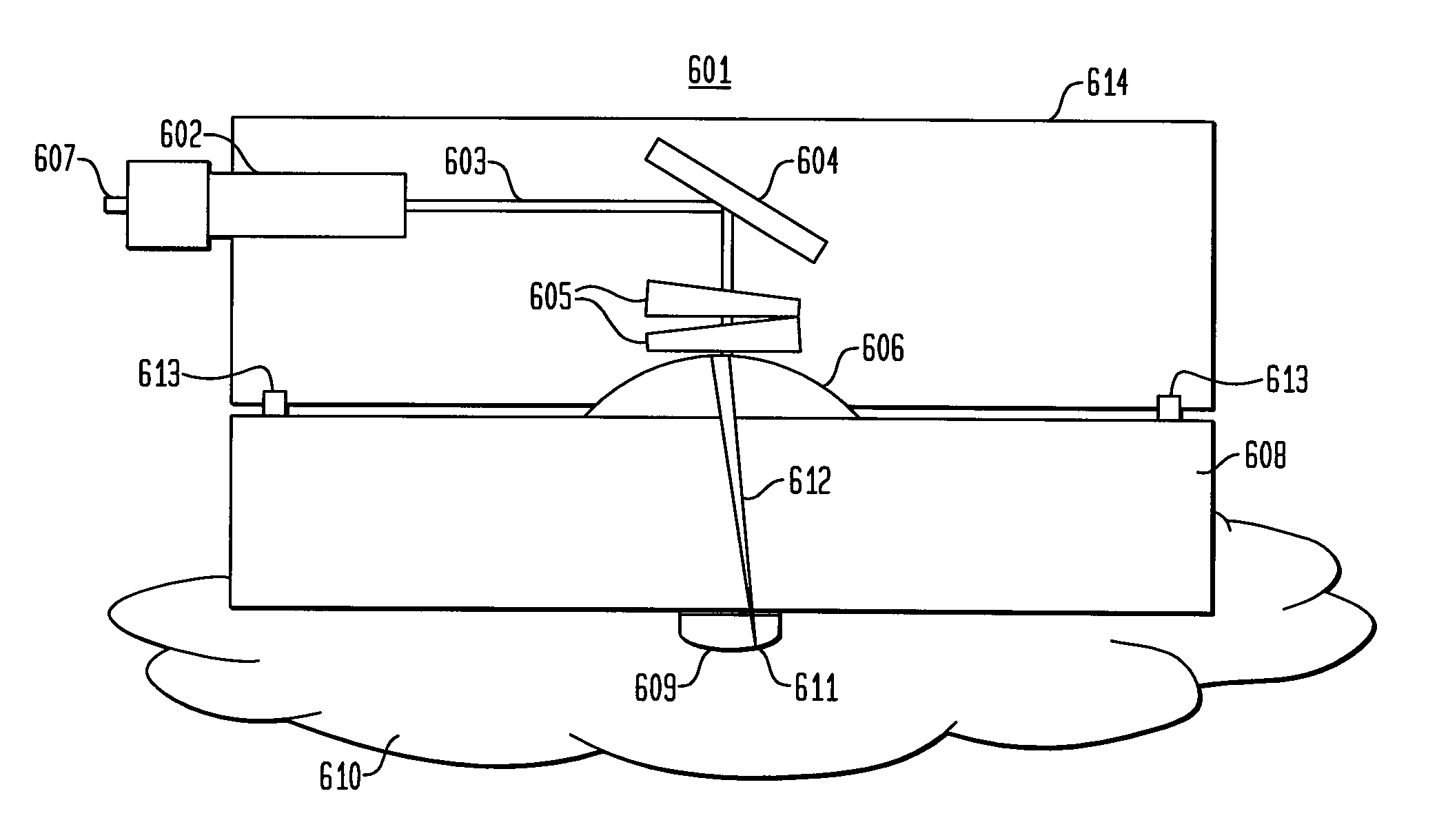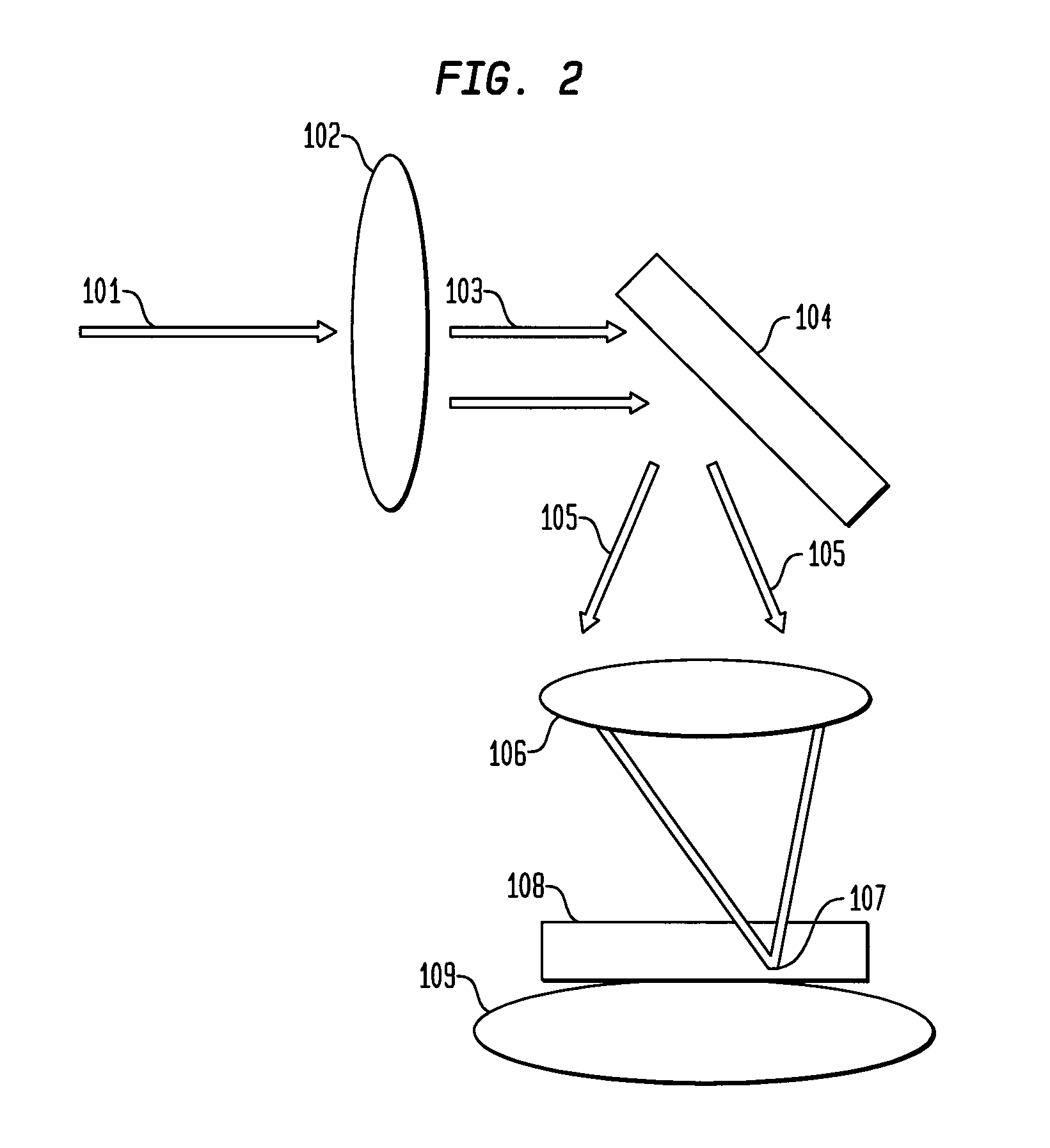System and method for creating a stable optical interface
a technology of optical interface and stable structure, applied in the field of stabilizing an optical interface, can solve the problems of low level of compliance, serious medical complications, low compliance, etc., and achieve the effects of optimizing improving the interface, and reducing the optical coupling efficiency of the sensor
- Summary
- Abstract
- Description
- Claims
- Application Information
AI Technical Summary
Benefits of technology
Problems solved by technology
Method used
Image
Examples
Embodiment Construction
[0061]FIG. 6A presents an optical scanning apparatus system or sensor system for taking blood glucose measurements, according to an embodiment of the present invention. Specifically, the sensor system in FIG. 6A includes a dual wedge prism sensor housing 616 attached to a disposable optical lens apparatus 608 with a Petzval surface 609. In FIG. 6A, sensor system 601 comprises a sensor housing 614 that includes a collimator 602 connected to a light source at a connecter 607, wherein the light source produces a collimated light 603. An example of a connecter is a fiber-optic cable. The collimated light 603 hits a fixed mirror 604, which bends the collimated light 603 to a ninety degree angle. The collimated light 603 passes through rotating dual wedge prisms 605 that deviate the angle of collimated light 603 off the optical axis of the sensor 601. The amount of deviation is based on the thickness of each wedge prism 605 that the collimated light 603 passes through as the wedge prisms ...
PUM
 Login to View More
Login to View More Abstract
Description
Claims
Application Information
 Login to View More
Login to View More - R&D
- Intellectual Property
- Life Sciences
- Materials
- Tech Scout
- Unparalleled Data Quality
- Higher Quality Content
- 60% Fewer Hallucinations
Browse by: Latest US Patents, China's latest patents, Technical Efficacy Thesaurus, Application Domain, Technology Topic, Popular Technical Reports.
© 2025 PatSnap. All rights reserved.Legal|Privacy policy|Modern Slavery Act Transparency Statement|Sitemap|About US| Contact US: help@patsnap.com



